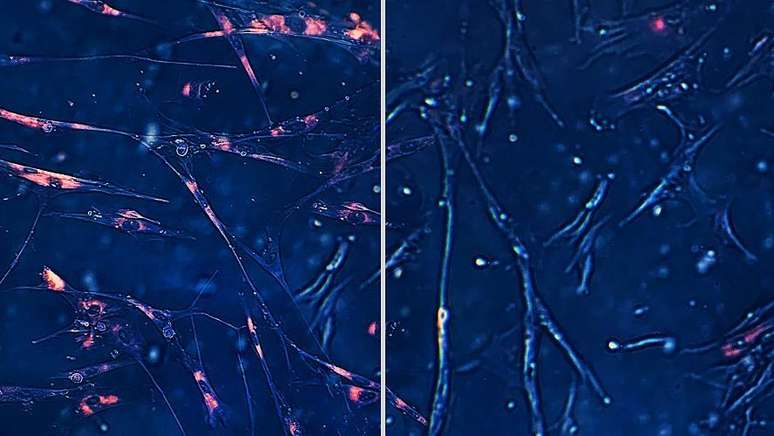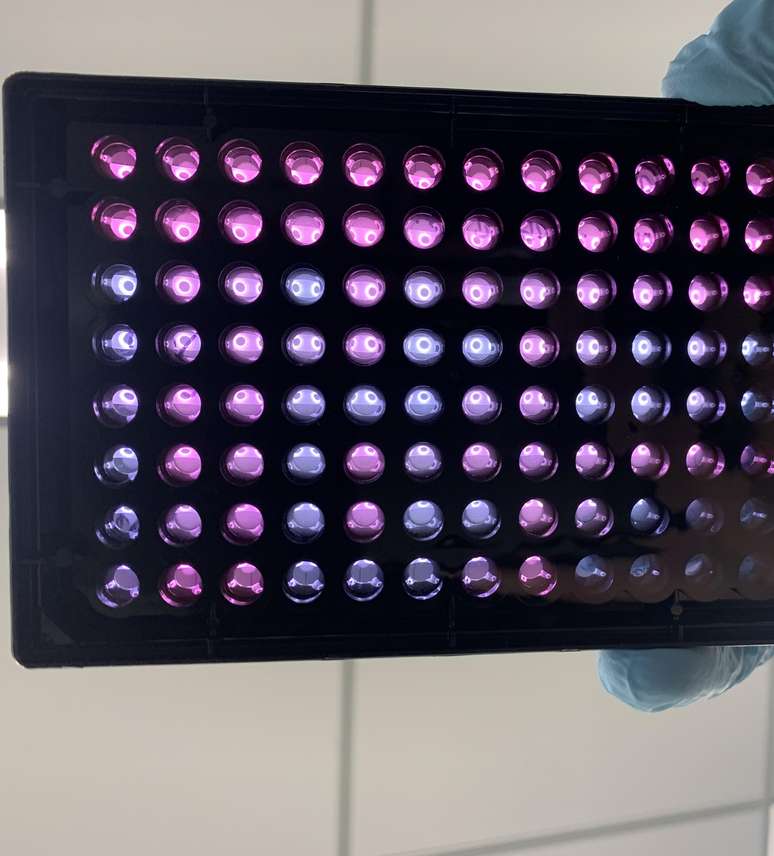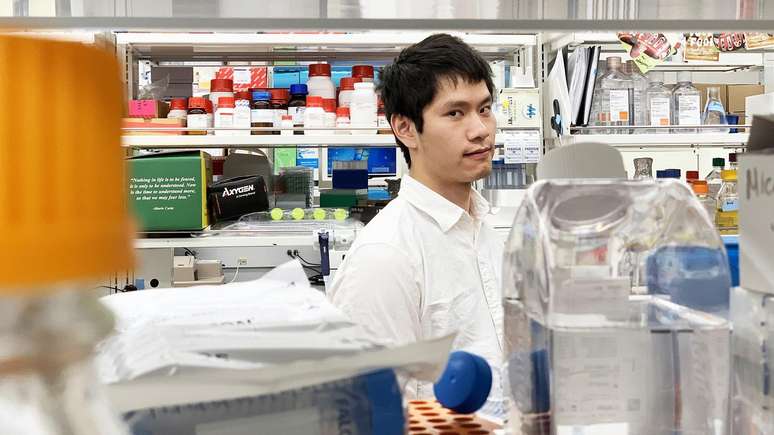The experiment uses artificial intelligence to find potential drugs that can slow down the aging of our cells, preventing them from turning into ‘zombies’
html[data-range=”xlarge”] figure image img.img-17b44d740e406a88972d671efdea9266t7t8vhid { width: 774px; height: 435px; }HTML[data-range=”large”] figure image img.img-17b44d740e406a88972d671efdea9266t7t8vhid { width: 548px; height: 308px; }HTML[data-range=”small”] figure image img.img-17b44d740e406a88972d671efdea9266t7t8vhid, html[data-range=”medium”] figure image img.img-17b44d740e406a88972d671efdea9266t7t8vhid { width: 564px; height: 317px; }HTML[data-range=”small”] .article__image-embed, html[data-range=”medium”] .article__image-embed {width: 564px; margin: auto 0 30px; }
The search for the elixir of life is intrinsic to humanity. While ancient Greek mythology told the story of how Zeus poisoned his father, the Titan Chronos, and thus gained immortality, modern physics debates ways to manipulate time in our favor.
A group of scientists from the Californian startup Integrated Biosciences, in collaboration with researchers from Harvard University and the Massachusetts Institute of Technology (MIT), in the United States, have taken this journey one step further.
The name of the published study, “Discovering small-molecule senolytics with deep neural network,” may sound complicated.
Perhaps that’s why its dissemination hasn’t quite gone far beyond academia yet, as the research was detailed in an article in the journal Nature Aging in May of this year.
In the paper, their results are described thus: “We trained deep learning models with the results of a sample of small molecules for senolytic activity and applied our models to discover structurally different compounds.”
What the scientists did, to simplify the explanation, was to use artificial intelligence (AI) to look for possible remedies capable of slowing down the aging of our cells and thus also fighting diseases such as fibrosis, tumors, inflammation and osteoarthritis.
“Finding a new drug is like looking for a needle in a haystack,” American physicist and mathematician Felix Wong, a biophysics specialist, lead author of the study and one of the founders of Integrated Biosciences, told BBC News Brasil.
“In our case, the haystack consists of all the potential chemical compounds ever created or that could be developed.”

Using artificial intelligence, Wong was able to test how more than 800,000 chemical solution options reacted to potential drugs that could select for and eliminate senescent cells, known as “zombie cells” in the body and which lead to the processes of aging.
By the end of the experiment, he and his team came up with three potential drugs that, in theory, could do this check.
“If we searched everything, i.e. looking at each complex one by one, a lot of effort would be required, as the haystack would be almost infinite,” Wong assesses.
“We use AI to search through that haystack much more efficiently by having the machine predict which of these drug candidates are more likely to work.”
In a statement to Nature Aging, biophysicist Andrew Rutenberg, a professor at Dalhousie University in Canada, highlighted this methodology as the great differential of the research.
“This impressive work uses extensive machine learning techniques to explore different molecular structures for use as new senolytics.”
The authors show how chemoinformatics (their English term for “chemical information”) can be used to create promising new anti-aging drugs, then test them and share details of their software to help accelerate future molecular discoveries.
How to train artificial intelligence to do science
The experiment began by preparing the machine to perform it.
Scientists first tested nearly 2,400 compounds in test tubes to evaluate them as possible killers of zombie cells. Then, they fed the software with the collected data.
After being trained in this way, the AI was used to search for the best antiaging drug candidates from over 800,000 options.
The robot manages to test all the alternatives, simultaneously, in search of the most effective drug. In scientific jargon, in this phase, the experiment was conducted “in silicon”, ie restricted to the digital environment.
With the sieve, 216 compounds were reached. Of these, 25 showed high senolytic activity, meaning they are very efficient at killing zombie cells.
New lab experiments then narrowed the list down to three potential drugs. One of these was tested on an 80-year-old mouse.
Scientists have found a decrease in biomarkers of ageing, i.e. the number of ‘zombies’ in the kidneys of rodents.
According to Wong, this “indicates that the compound can effectively reduce cell aging in living animals.”
For now, the three solutions being tested are called BRD-K20733377, BRD-K56819078 and BRD-K44839765.
Complicated acronyms, which seem to come from the labels of laboratory vials. “But this could one day allow us all to live longer and healthier lives,” predicts Wong.

Why not test on humans?
In the screening carried out by the AI, one of the main factors assessed were the likely side effects of the drugs.
“We have been using computers in biological experiments for more than fifty years, but artificial intelligence has progressed to such an extent that today it is possible to carry out experiments on this scale,” Brazilian biologist Aline Martins tells BBC News Brasil.
She is a researcher at the Scripps Research Institute, in the city of San Diego, USA, where she conducts research using artificial intelligence to look for more efficient biomarkers (biological compounds that can detect and therefore help prevent disease).
Martins, who is not one of the authors of the study, was enthusiastic about her colleague’s work because she “tested in many ways how thousands of existing substances, with activities described in the scientific literature, can be reused with the function of combating aging”.
He also points out that this is “something that would be impossible to do in humans, or in the laboratory, without using this silicon medium.”
Zombie cells, the senescent ones, are not necessarily harmful to our body. Conversely, they also act as a natural anticancer mechanism.
“By preventing damaged cells from dividing, this process reduces the chance that cells will spiral out of control and become cancerous,” says Felix Wong.
But zombies also lead to aging and, consequently, to diseases such as osteoarthritis, inflammation or even cancer.
“What is being sought today is a balanced senolytic, capable of slowing down our aging processes, but without causing even more harmful and toxic effects in the process,” stresses Aline Martins.
Wong believes we may be close to making this discovery.
‘We followed the rites of science. We hope to eventually test them in humans, with the goal of using these compounds to increase our lifespan by eliminating subpopulations of aged cells that are harmful to us.’
Is it the elixir of life?

An ancient Chinese myth, dating back to the 2nd century BC, tells the story of an archer, Hou Yi, who, after a heroic act responsible for saving his people, won the elixir of life from the goddess Xiwangmu. The drink would be able to grant him immortality.
However, his wife Chang’e drank the divine cocktail one day to prevent a thief from stealing it. With that it was she who achieved immortality and, according to legend, she flew to the moon, where she would still live.
Are Wong and his team on their way to discovering the elixir of life?
The scientist himself does not believe this to be the case. “Senescence (the aging process of cells) is only one aspect of maturation.”
Therefore, according to him, these drugs, even if they are successful, will not be “the fountain of youth.”
“To achieve this, we should also focus on other milestones in the aging process, such as stem cell depletion.”
The goal is, therefore, to find ways not towards immortality, but towards a long and, at the same time, healthy life.
Also because, both from the point of view of physics and philosophy, immortality is unattainable.
As the Italian physicist Guido Tonelli recently told BBC News Brasil: “Nothing is eternal, every structure of matter, be it a human being, a star, a galaxy, is intrinsically fragile. Sooner or later, everything ends”.
Source: Terra
Ben Stock is a lifestyle journalist and author at Gossipify. He writes about topics such as health, wellness, travel, food and home decor. He provides practical advice and inspiration to improve well-being, keeps readers up to date with latest lifestyle news and trends, known for his engaging writing style, in-depth analysis and unique perspectives.








